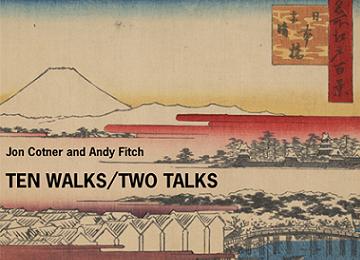PUBLISHER’S synopsis:
“Ten Walks / Two Talks updates the meandering and meditative form of Bashō’s travel diaries.
Mapping 21st century New York, Cotner and Fitch tap their predecessor’s collaborative tendencies in order to construct a descriptive / dialogic fugue. The book combines a series of sixty-minute, sixty-sentence walks around Manhattan and a pair of dialogues about walking—one of which takes place during a late-night “philosophical” ramble through Central Park.”
Notes
1. Getting the book
